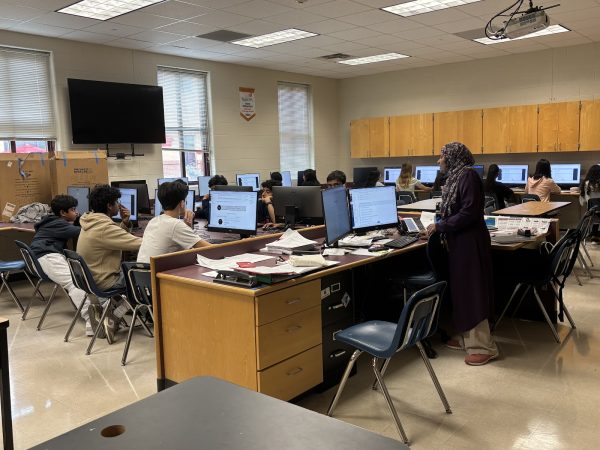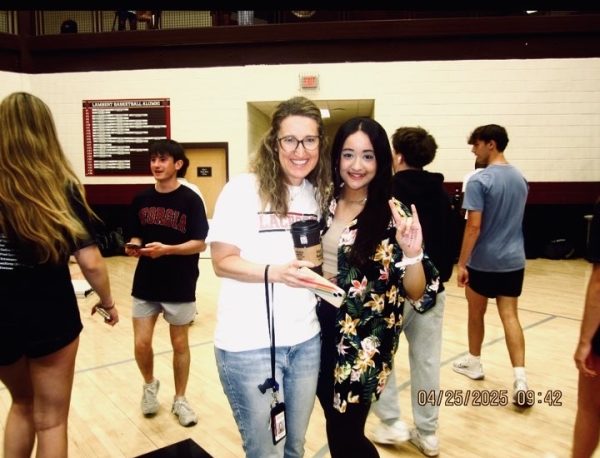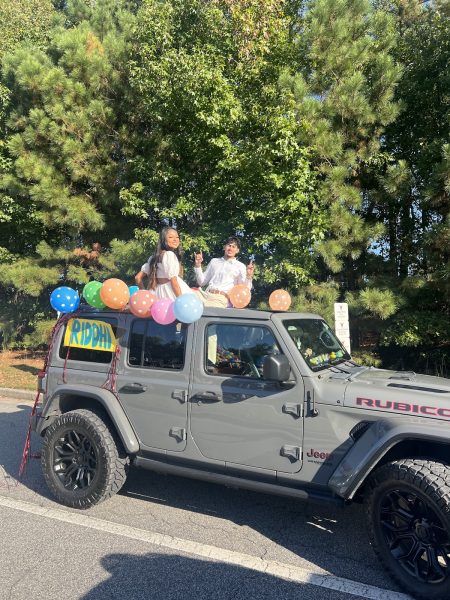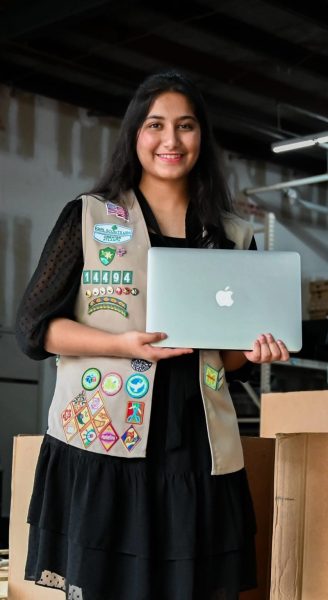Blood Drive: Stayin’ Alive
The HOSA Blood Drive, held from 8:30 a.m. to 1:30 p.m. in the auxiliary gym, fought the two-year critical need for blood in the US.
21 to 27 student volunteers were needed for the entire day, and a few per class period. HOSA Officers and members who ran the drive arrived at 6:45 a.m. Members organize a blood drive in the Fall and Summer, typically in November and March. Approximately 150 to 200 students and staff from Lambert donate at each drive. Every pint saves up to three lives. The Red Cross receives an ample amount of donations from high schools, and the organization supplies blood to every hospital in the country.
Different illnesses and treatments require different parts of blood. Reasons an individual would need a donation include, but are not limited to, iron deficiency, anemia, cancer, and cancer treatments, organ transplants, car crashes, birth, blood disorders, and burns. Red blood cells help raise the levels of iron and hemoglobin, which is needed by patients with iron deficiencies, sickle cell anemia, certain kinds of trauma, and cancer. Chemotherapy may render patients unable to produce platelets. Patients with sickle cell anemia and chronic illnesses need whole blood transplants. Plasma is necessary for managing liver failure, severe infections, serious burns, and organ transplants. AB blood is essential for maintaining blood pressure post-surgery.
The Red Cross’s process of checking blood for abnormalities and deficiencies is transparent and documented on their website. Their equipment ensures blood will clot as necessary and will not cause an adverse reaction in the patient’s body. HOSA’s goal every year is 100 successful pints, but potential donors were deferred if they were underweight, dehydrated, or low in iron. However, donated blood was still tested. If anything concerning was found, results were sent within 24 hours to the donation site. There was an option called the Power Red, which allowed donors to give two pints of blood at one appointment.
The volunteers were alert in case a donor fainted. When this occurred, the donor’s legs were elevated to rush blood to the head, which subsequently raised their blood pressure. If the student did not feel well enough to go back to class, their parents were called. Several volunteers per class period walked students back to class.
“We always have a lot of health professionals on hand- our healthcare teacher, the nurse, EMTs,” Vishnavi Batchu, Co-Vice President of HOSA, noted.
Students visited the registration table to check-in and earn service hours. They were asked to take water and snacks at the canteen before or after donating. The RapidPass® allowed students to answer questions on a mobile device before reaching the health history station. The mini-physical at this station ensured potential donors could safely give blood. All donors were a minimum of 4’11’’, 110 pounds, and at least 16 years old. If 16, they had to have parental consent. Students who are not old enough to donate sometimes asked their parents to participate. Travel restrictions apply and typically last from six months to a full year. Tattoos from parlors were acceptable, but if from anywhere else, they must have been imprinted in the skin at least a year ago. Potential donors must wait a year if their piercings were from a reusable instrument. The medical professionals measured essential nutrients in the blood by pricking the volunteer’s finger. Low or high blood pressure also raised concerns.
“Low or high blood pressure is an issue because it dictates how fast the blood comes out of the body. If it’s too high, you don’t want it to be spewing out of your arm,” Rishi Rao, a HOSA member, disclosed.
Students stayed in the waiting area for about 15 minutes in the morning but may have had to wait for up to an hour at lunch. Their friends were welcome to stay for moral support and distract them while they gave blood. Teachers were placed in a raffle to win a $25 gift card and Spirit Points for their grade level.
Thank you to every donor and medical professional who made the drive possible!
To find a local drive, visit this link:
Your donation will help support The Lambert Post, Lambert High Schools student-run newspaper! Your contribution will allow us to purchase equipment and cover website hosting costs.







